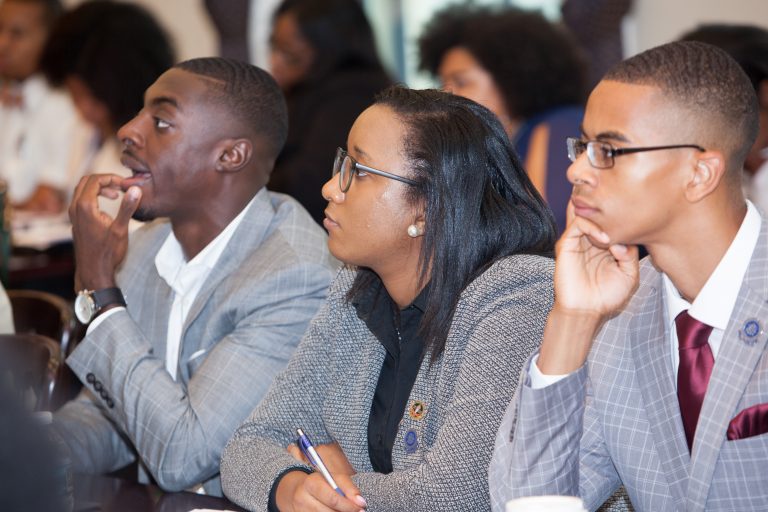Bringing Awareness to Settings With Harassment

In today’s society and generation, there is bullying, and harassment shown in many different ways! There is verbal and physical bullying but cyberbullying has become much more prominent. Why should we bring attention to this issue? According to the NAACP, bullying has caused many to end their lives, and develop deep and serious mental health issues. Although bullying and harassment commonly affect teens in school, it is just as common in the workplace and general society.
Over 5.7 million or 30% of youth in the United States are the victim of a bully, or is the bully. Dr. Jameca Woody Cooper, a licensed clinical psychologist in St. Louis Missouri states, “Some people know their bullies, and others don’t. Often, they don’t realize that their behavior constitutes bullying.” Bullying is not new, it has been here for decades. In fact, Dr. Jameca goes on to say, “It has changed and evolved in the way it happens now, especially with the technology, social media, and many other ways.”
Did you know that 1 in 5 (20%) of teens are cyberbullied, have cyberbullied others, or have watched cyberbullying happen? Even worse, individuals who have experienced cyberbullying in their lives have more than doubled.
Jenny Flora Wells, a licensed early childhood educator in Ohio, has experience working with kindergarten through third grade but has also worked with a lot of adolescents within the school system. From there, she got her masters in social work from Ohio State and now works with families, adolescents, and kids to individualize people’s healing journeys affected by bullying both in a school setting as well as in society.
Did you know a large percentage of workplace employees leave because they are victims of bullying? According to Setyan Law, approximately 64% of employees who have been victims of bullying are more likely to quit their jobs. In addition, 45% of individuals develop mental health issues, more specifically anxiety, and stress-related health issues.
What can we do to prevent bullying and create a more inclusive environment? Wells says that we need to implement educational pillars and curriculum-based lessons about why bullying happens. We cannot just have May Mental Health Month and then move on: there needs to be more reinforcement of such topics.
Flora Wells comments, “Because if you think about the stages of development, and all the things that happen between elementary, middle and high school, these are transformative years of our lives and building on encouragement and inclusivity of different backgrounds just like every other subject would positively shift society. This would show adolescents and children that we care.”
There needs to be a stronger curriculum on bullying and harassment. The lack of social and emotional understanding between our peers and the individuals we interact with calls for awareness of one’s social and economic background. There is a need for knowledge and connection between individuals, peers, and family relatives to produce an empathetic society.
Wells believes in treating the root cause and the systemic issue, she states, “If you don’t treat the root, nothing will really change. How are we teaching kids about this from the very beginning? I think looking at the foundation, and teaching kids from the very beginning is essential.” Wells describes consequences and punishments like putting a bandaid on our wounds. The foundational work impacts the psychological part of the brain in a much more proactive way than getting punished. This means starting intervention early with students such as reinforcing the definition of bullying and the negative impact it has on society. In the future, their kindness and acceptance will come naturally, if the foundational work is implemented over the course of K-12. This makes a positive impact on the brain. She goes on to say the importance of ensuring the student walks away with a lesson learned rather than repeating their mistakes and poor behavior.
Alexandra Ushakova wrote an article on the Challenges of College Life and Mental Health Perspectives. She states that 1 in 5 adults or 20% suffer from problems regarding their mental health. Dr. Jameca mentions that mental health issues can impact a bully or the victim. For instance, those who have been bullied could have mental health issues later on in their life such as PTSD, which could affect their long-term and short-term relationships. Also, Chhaya Patel in the Societal Pressures of Romantic Love writes about Aromantic experiences and the different ways people express love. Although Patel never touches upon bullying and harassment in an aromantic relationship, it is insinuated that people who are bullies or victims may not have that romantic attraction and relationships. Wells says, “It is essential to show compassion and make mental health a pillar in education and in the workplace.”
“I think all people are born good but it is what happens to us that leads us to respond in certain ways,” Wells says.




